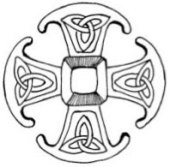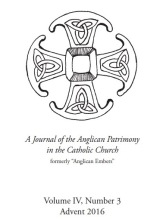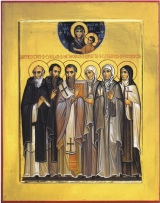On Monday of this week Father Ed Tomlinson posted a short article on his blog about “Singing the Angelus”, on the day after my weekend in London, when I experienced it twice at Most Precious Blood in The Borough, London. He wrote:
“One of the new/ancient customs we have introduced at Saint Anselm’s since becoming a quasi parish in our own right is the singing of the Angelus at the end of mass on Sunday. Something we do at both 9:15 and 11am.
As the Angelus is sung, confiding us to the maternal intercessory care of the mother of Christ, the children of the parish gather at her feet. This is a time for our families to be cherished. Then, as the devotions come to an end, the children are encouraged to light candles and offer their own prayers.
A simple custom but a very moving one.”
 My experience at Most Precious Blood is that Fr. Christopher Pearson approaches the statue of Our Lady in the small Lady Chapel and begins the Angelus as near to twelve o’clock as possible. Normally he has taken off his vestments after the 11 a.m. mass. In the picture below, Fr. Chris is vested because it is at the beginning of Saturday’s ordination mass, which began at 12 noon.
My experience at Most Precious Blood is that Fr. Christopher Pearson approaches the statue of Our Lady in the small Lady Chapel and begins the Angelus as near to twelve o’clock as possible. Normally he has taken off his vestments after the 11 a.m. mass. In the picture below, Fr. Chris is vested because it is at the beginning of Saturday’s ordination mass, which began at 12 noon.
 On Sunday I was seated immediately behind the front row of young children who had come into mass after their Sunday School, and you can perhaps imagine how surprised and moved I was to see how they joined in all the responses word and tone perfect. When I mentioned this to Dame Joanna Bogle after mass, she made a very valid comment: “This is something that these childen will never forget their whole lives”.
On Sunday I was seated immediately behind the front row of young children who had come into mass after their Sunday School, and you can perhaps imagine how surprised and moved I was to see how they joined in all the responses word and tone perfect. When I mentioned this to Dame Joanna Bogle after mass, she made a very valid comment: “This is something that these childen will never forget their whole lives”.
In this version of the Angelus from an Anglo-Catholic parish in the USA, which I found on youtube, the melody of the response to the Hail Mary (“Holy Mary, Mother of God, … “) is slightly different from the one sung at Most Precious Blood. There, in the key of G, the notes are B – E – A – D – G – B – A – G.











At St. Athanasius, Boston we also recite the Angelus after Mass (although we do not sing it). Mass ends about 12:40, and during the final hymn the priest and server go to the sacristy and unvest (or is it divest 🙂 and return to the Marian altar in the schola area to lead the Angelus. During Eastertide we sing the Regina Coeli.
I have seen the same practice at other Anglican Use events, and think it has likely long been the practice among the Pastoral Provision parishes here.
cav513,
You wrote: At St. Athanasius, Boston…
I’m curious as to what is happening with respect to your community and the Personal Ordinariate of the Chair of St. Peter.
>> 1. Is St. Athanasius moving to join the Personal Ordinariate of the Chair of St. Peter, or is there a conscious decision not to do so, or is there reason for delay?
>> 2. Does the congregation of St. Athanasius have any interaction or collaboration with St. Gregory the Great in Beverly?
You wrote: Mass ends about 12:40, and during the final hymn the priest and server go to the sacristy and unvest (or is it divest 🙂 and return to the Marian altar in the schola area to lead the Angelus. During Eastertide we sing the Regina Coeli.
I have seen the same practice at other Anglican Use events, and think it has likely long been the practice among the Pastoral Provision parishes here.
The practice of singing a Marian antiphon at the end of mass is not limited to the “Anglican Use,” but in normal Roman Catholic practice it takes place before the final hymn and the exit procession. When visiting my friends in Denver, we often went to the Stational Mass at the Cathedral Basilica of the Immaculate Conception where Archbishop Charles Chaput, now Archbishop of Philadelphia, would always go to the Marian altar to pray a Marian antiphon before the exit procession. And during the recent abbatial blessing of Rt. Rev. Thomas O’Connor, O. S. B., at the Benedictine Abbey of Our Lady of Glastonbury, the entire procession — which was not exactly short — came off the sanctuary and turned to the icon of Our Lady of Glastonbury for the singing of the Salve Regina (in Latin). In normal monastic life, however, Benedictine communities seem to prefer to sing a Marian anthem after vespers rather than after mass.
Norm.
Dear Norm,
I think we should make clear for those not in the know that the Regina Coeli can be used for two different purposes and at different times of the day.
The Regina Coeli itself is a Marian Antiphon (like the Salve Regina, the Ave Regina Coelorum and the Alma Redemptoris Mater, which are sung at particular times of the year at the end of Compline – or if you don’t say Compline, they can be sung at the end of Vespers).
The Regina Coeli accompanied by a concluding prayer is, however, also used during the Easter season in place of the Angelus (i.e. at 6 am, 12 noon and 6 pm). My experience is that it is generally spoken not sung (cf. the practice of the Pope at the end of Papal masses which end at around noon or at the end of his midday message from the balcony on Sundays). Although in Anglo-Catholic churches I have heard it sung in English to the melody of Jesus Chist is risen today.